Here is today’s summary of the “Campfire Talks with Herbie”.
Patrick Steyaert and Arlette Vercammen
Name (and Company/Affiliation if desired)
Patrick Steyaert and Arlette Vercammen
Who are you?
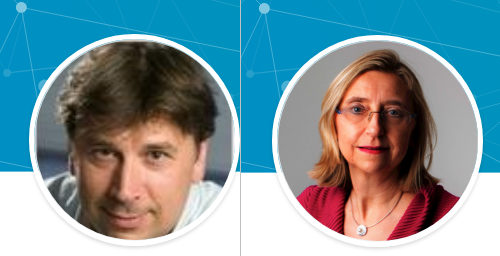
Early days agile practitioner turned into coach turned into contributor to advancing the state of the art in teaching and coaching new ways of working. For that purpose, I am currently working on:
-
Scaling patterns – a right brain (upstream) answer to the scaling methods that are dominated by left brain (downstream) thinking;
-
simulations that allow people to experience these patterns in a tangible way (and exercise their right brain);
-
a dojo concept to develop full-brain thinking with practitioners and facilitators.
How did you get involved with Agile, Coaching, Organizational Performance? Are you making a living in this sector?
I got involved as a practitioner in the early days of agile (end 1990s). I was working on reflective object-oriented programming languages and through that I got exposed to design patterns, organizational patterns but also Scrum and XP. I was at the OOPSLA conference where Christopher Alexander talked about his work on pattern languages in architecture; I participated in a couple of workshops with Kent Beck and was exposed to Scrum when I was working with Oscar Nierstrasz in Bern.
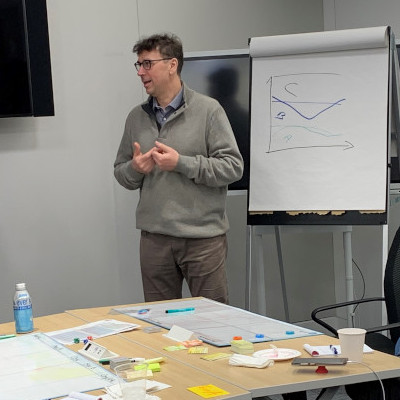
At the same time my partner, Arlette Vercammen, started a company that developed program planning systems for broadcasters in Smalltalk (an early OOPL). In a very natural way they had developed the initial system by iterating with their customer. This got documented in Adele Goldberg and Kenny Rubin’s book on “Succeeding with objects”.
I joined the startup to lead the development team. The team was a very young but very talented group of developers. Based on conversations I had with Martine de Vos (who was involved in early Scrum) we started to organize ourselves in Scrum teams. Adele Goldberg also advised us to look at Jim Highsmith’s Adaptive Project Management. Kent Beck came over to talk to us about XP and we adapted many of the XP engineering practices. Jim Coplien (I was part of the jury for his PhD defense) came over to have a workshop looking at our interactions (exposing us to his organizational patterns). This was all before the Agile Manifesto.
For me personally the time of the Agile manifesto was a turning point. It was the transition from practitioner to coach. I joined a small training and consulting company. We organized Scrum trainings amongst other topics. I did not feel comfortable to become a Scrum trainer, so I focused on coaching. As was not uncommon at that time, I was working on the edge between very traditional ways of working (traditional project management, CMMI, …) and agile.
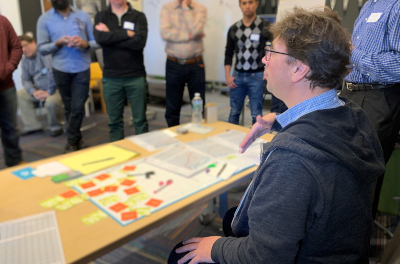
After a few years I picked up this new thing called Kanban. The first Kanban system that I set up was an upstream Kanban system. This got picked up by David Anderson who encouraged me to develop this further. I got convinced to focus entirely on Kanban coaching and training. I got involved in the Kanban training program and the Kanban community in general.
Mike Burrows, another source of inspiration for me, pointed me in the direction of using simulation as a new way of teaching Kanban. This led to the development of Okaloa Flowlab which is my main focus today.
How did you discover TameFlow? And are you or will you use it professionally?
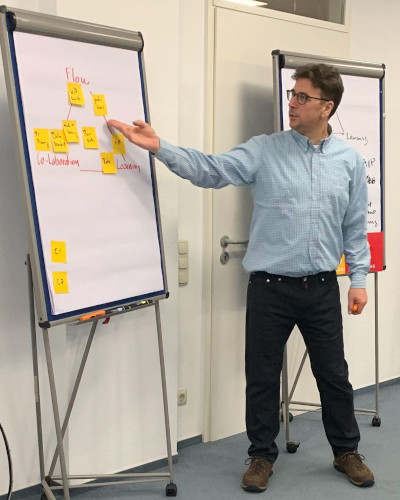
I met Steve at a Lean Kanban Benelux conference around 2015. I think he was intrigued by my work on Upstream Kanban and saw some connection with TOC. It was clear from the beginning that we shared a passion about different ways of creating flow in organisations. We kept contact over the years sharing experiences and ideas.
Give us a typical day in your life! And what makes you happy at the end of that day?
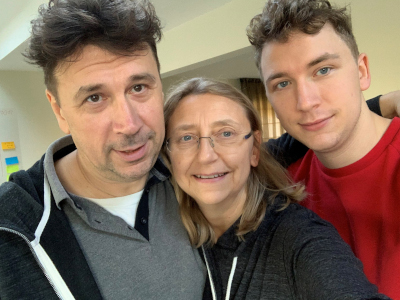
I tend to get up around 7. The ritual we have developed during the COVID lockdown is to start the day with a good walk.
I have a stand-up at 8:45 to follow up on the development of Okaloa Flowlab online.
What happens next varies a lot.
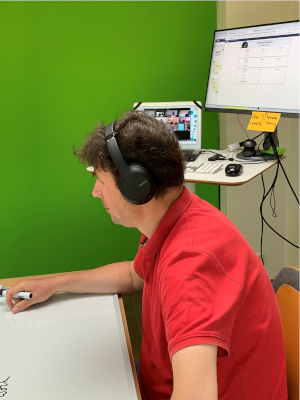
Either I have an online workshop for the rest of the morning teaching participants how to facilitate Okaloa Flowlab; or I work on defining the next steps that we have to take to further develop our community into a real dojo; or I help out with another facilitator with a challenge that (s)he is facing; or I work on further giving substance to our scaling patterns or prepare a presentation; or I pair program with a developer on the online system or with Arlette on our Dojo.
The afternoon starts with a stand-up again, and the same pattern repeats.
In the evening, if I have energy left, I play some golf with my pals, or some badminton or do some tai-chi with Arlette.
What are the most important skills, insight you’ve developed while getting involved with this industry? What were the greatest challenges on your path? And rewards?
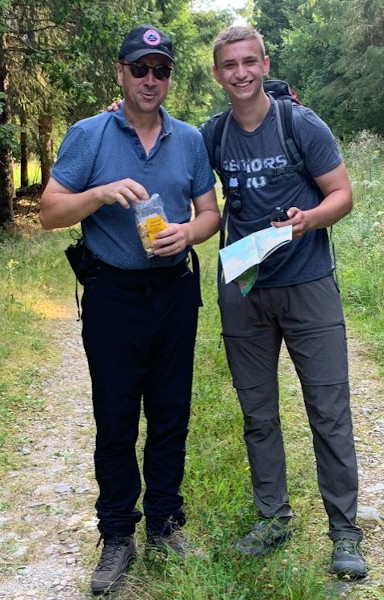
I am currently reading Iain McGilchrist’s The master and His Emissary. McGilchrist allows me now to put in words the fact that I’ve developed, I hope, more right brain thinking over the years. I have developed much more of a sense of looking at the whole of a situation, and not get bogged down or distracted by details. This is a constant struggle. So I am clearly not fully there (if one can ever get there).
This is and has been my biggest challenge. To learn to listen to my own inner voice.
I have had numerous cases were I did what was expected of me, listened to my own “rational”, left brain self. Often times I was doing something that I was not fully engaged in. I try to listen more to this inner voice. My most rewarding moments are when this pays off. When my own engagement inspires others.
What do you want to learn from a community of peers, like the one on the TameFlow Community site? What is your TameFlow Community handle or how else can other TameFlow enthusiasts reach out to you?
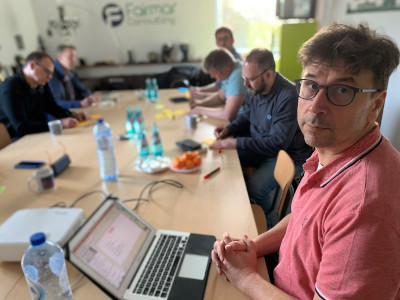
What does a good community look like? A lot of what we see are communities that are organized around a particular school of thought. I.e. they are organized around a particular thinking model or orthodoxy. The community is there mostly to protect the doctrine. It is hard for such communities to entertain (radically or not so radically) new ideas. They often don’t start out this way, but they tend to evolve in that direction. The focus tends to shift from upstream discovery to downstream application.
What I am searching for is whether it is possible to organize a community more as a place of practice. Open to all kinds ideas. What Jonathan Haidt calls a heterodoxy rather than an orthodoxy. Patterns are central in a community like this. Patterns are a recognition that there is no single truth. Context is important, and things co-evolve. This also entails a very different way of organizing. I am eager to learn from all kinds of communities in this way.
How do you see your future? And does TameFlow have a role there? And what do you believe about the future of TameFlow?
I started with agility and patterns and after a detour in upstream Kanban land, it feels that I am going full circle now. Things start to come together.
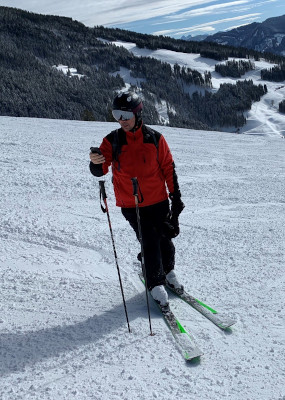
Scaling patterns are a way for us to talk about what we are actually doing – a right brain / upstream approach in an industry that is dominated by left brain / downstream solutions.
We have the instruments to teach and coach this (i.e. through our simulations) and ideas about how to organize a community around it (the dojo). We are in good standing with other communities because we show respect and because they see value in what we do.
In that capability I hope we can be a bridge builder between communities. I think there is a lot of affinity with TameFlow just like us, and TameFlow, having a lot of affinity with the Kanban community. I hope we can deepen this.
What question(s)/topics about TameFlow would you like to propose to Steve?
How do you see the future of TameFlow? How do you intend to keep the community open to new ideas? Do you want it to be a heterodoxy or an orthodoxy? A school of thought or a community of practice? And in what way do patterns play a role in that?
If you found the topics in the “Campfire Talks with Herbie” interesting, there is much more to learn about them in the The Book of TameFlow book.